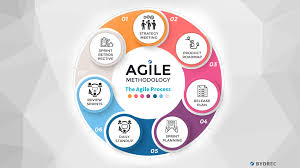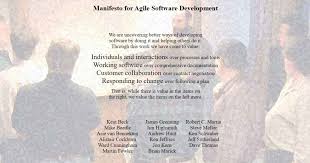Understanding SDLC and Agile: A Comparison
Software development is a complex process that requires careful planning, execution, and management. Two popular methodologies used in software development are the Software Development Life Cycle (SDLC) and Agile. While both approaches aim to deliver high-quality software products, they have distinct characteristics that set them apart.
Software Development Life Cycle (SDLC)
The Software Development Life Cycle is a structured approach to software development that consists of several phases, including planning, analysis, design, implementation, testing, and maintenance. Each phase has its own set of tasks and deliverables, and the process follows a linear sequence where each phase must be completed before moving on to the next.
SDLC is known for its predictability and stability. It provides a clear roadmap for the development process, making it easier to estimate timelines and budget requirements. However, the rigid nature of SDLC can sometimes lead to delays if changes need to be made mid-project.
Agile
Agile is an iterative approach to software development that focuses on flexibility, collaboration, and continuous improvement. In Agile methodology, projects are divided into small increments called sprints, with each sprint delivering a working product feature. This allows for quick feedback from stakeholders and the ability to adapt to changing requirements throughout the project.
Agile is highly adaptive and encourages constant communication between team members and stakeholders. By prioritizing customer satisfaction and responding quickly to changes, Agile teams can deliver value more efficiently than traditional SDLC approaches.
Comparison
- Flexibility: Agile is more flexible than SDLC in accommodating changes during the development process.
- Predictability: SDLC offers greater predictability in terms of timelines and budget estimates compared to Agile.
- Communication: Agile emphasizes regular communication among team members and stakeholders for better collaboration.
- Risk Management: Both methodologies address risk management but in different ways – SDLC through thorough planning and documentation, while Agile through iterative testing and feedback loops.
In conclusion, both SDLC and Agile have their strengths and weaknesses when it comes to software development. The choice between the two methodologies often depends on the specific requirements of a project, as well as factors such as timeline constraints, budget considerations, and stakeholder preferences.
Mastering Software Development: Key Insights into SDLC and Agile Practices
- Understand the key phases of SDLC
- Agile emphasizes collaboration and customer feedback throughout the development process to adapt to changing requirements.
- Utilize sprints in Agile to break down projects into manageable time-boxed iterations for continuous delivery.
- Incorporate regular stand-up meetings in Agile to ensure team alignment and quick identification of obstacles.
- Focus on creating detailed documentation in SDLC for clear project guidelines and future reference.
- Prioritize working software over comprehensive documentation in Agile while maintaining necessary records.
Understand the key phases of SDLC
Understanding the key phases of the Software Development Life Cycle (SDLC) is essential for ensuring a structured and systematic approach to software development. By familiarizing oneself with phases such as planning, analysis, design, implementation, testing, and maintenance, developers can effectively manage the entire development process from inception to deployment. Each phase plays a crucial role in the overall success of the project, and having a clear understanding of these stages helps in setting realistic expectations, identifying potential risks early on, and ensuring that the final product meets both functional requirements and client expectations.
Agile emphasizes collaboration and customer feedback throughout the development process to adapt to changing requirements.
Agile methodology places a strong emphasis on collaboration and customer feedback at every stage of the development process to effectively respond to evolving requirements. By fostering close communication between team members and stakeholders, Agile teams can quickly adjust their approach based on real-time feedback, ensuring that the final product meets the needs and expectations of the end users. This iterative approach not only enhances the quality of the software but also promotes a more customer-centric and adaptable development environment.
Utilize sprints in Agile to break down projects into manageable time-boxed iterations for continuous delivery.
Utilizing sprints in Agile methodology is a strategic approach to breaking down projects into manageable time-boxed iterations, allowing for continuous delivery of valuable software features. By dividing the project into smaller, focused segments, teams can prioritize tasks effectively, collaborate efficiently, and adapt to changing requirements more easily. Sprints enable teams to deliver incremental value to stakeholders at regular intervals, fostering a dynamic development process that promotes feedback and improvement throughout the project lifecycle.
Incorporate regular stand-up meetings in Agile to ensure team alignment and quick identification of obstacles.
In Agile methodology, incorporating regular stand-up meetings is a valuable tip to ensure team alignment and quickly identify obstacles. These brief daily meetings provide team members with an opportunity to sync up on project progress, share updates, and address any challenges they may be facing. By fostering open communication and collaboration through stand-up meetings, Agile teams can stay focused, adapt to changes efficiently, and work together towards achieving project goals effectively.
Focus on creating detailed documentation in SDLC for clear project guidelines and future reference.
Focusing on creating detailed documentation in the Software Development Life Cycle (SDLC) is crucial for providing clear project guidelines and ensuring future reference. Comprehensive documentation helps in capturing important project requirements, design specifications, development processes, and testing procedures. By documenting each phase of the SDLC thoroughly, teams can maintain transparency, facilitate effective communication, and mitigate risks associated with misunderstandings or misinterpretations. Detailed documentation also serves as a valuable resource for future maintenance, upgrades, or scaling of the software product, enabling smoother transitions and informed decision-making throughout the project lifecycle.
Prioritize working software over comprehensive documentation in Agile while maintaining necessary records.
In Agile methodology, it is important to prioritize the delivery of working software over extensive documentation. While documentation is necessary for maintaining records and ensuring clarity, the primary focus should be on producing functional and valuable software for users. By emphasizing working software, Agile teams can quickly iterate, gather feedback, and make necessary adjustments to meet evolving requirements effectively. This approach promotes agility, collaboration, and responsiveness in the development process, ultimately leading to more successful outcomes for projects.



